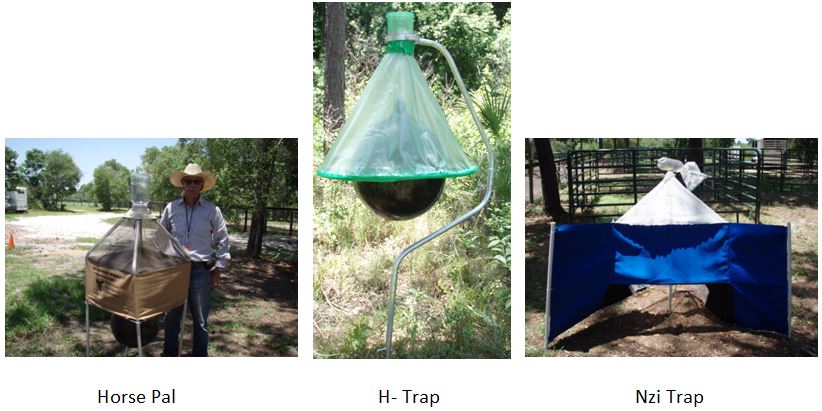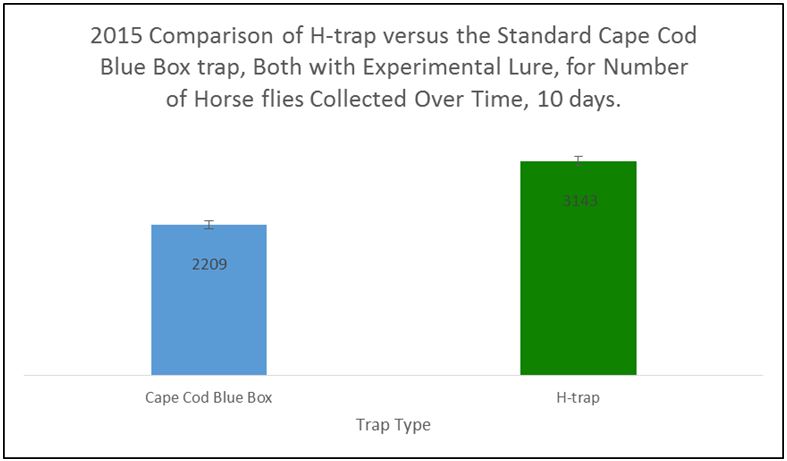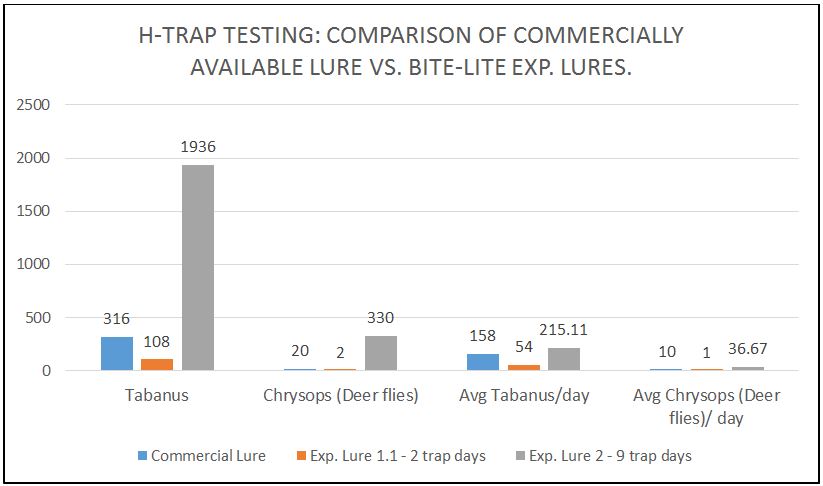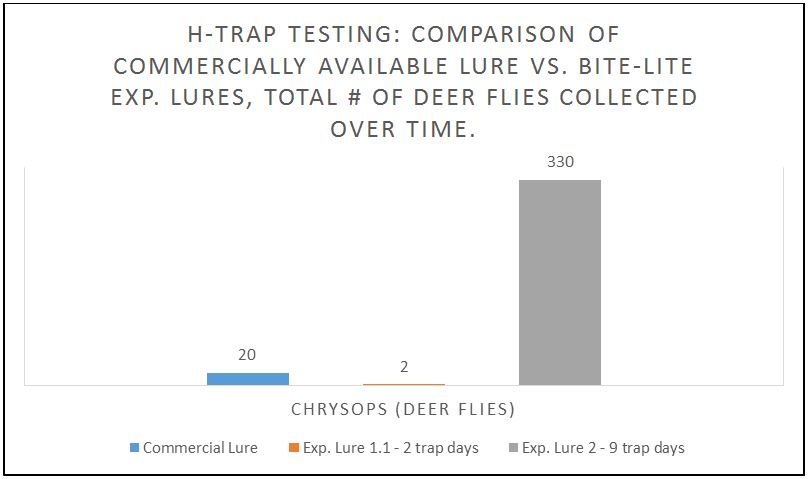Comparison of Adult Tabanidae (Horse fly) Collections at a Wildlife Refuge Near a Horse Boarding Facility in Cedar Key, Florida; 2014.


The USDA conducted testing in the summer of 2014, comparing horse fly collections from two commercial traps, the H-Trap and Horse Pal, and one standard surveillance trap, the NZI, in a wildlife refuge that was near a horse boarding farm in Cedar Key, Florida. Researchers set up these three different style traps, per each manufacturer’s instructions, using no added attractants. On the first day, the H-Trap, Horse Pal, and NZI traps were placed in one of three sites, and then rotated 24 hours later. This allowed all three traps to be tested at each site. Three repetitions were conducted, and the total number of Tabanids collected over time was recorded. The total number of horse flies collected was 3483; of that number, more than half (57.5%) were collected by the H-trap alone!
Comparison of Adult Tabanidae Collections in Massachusetts in 2015

In the summer of 2015, the Cape Cod Greenhead Fly Control Project, a division of the Mosquito Control District, compared the efficacy of the standard Cape Blue Box trap with the Bite-Lite H-Trap for the collection of Tabanids. Both the Bite-Lite horse fly trap and the Blue Box were baited with the same experimental lure. Two of each trap type were used in the testing at four sites in Northern Cape Cod. Each morning, the researchers emptied the traps just before 10 a.m., placed new lures in the traps, and ran the testing for three hours. Traps with lures were rotated between sites in order to prevent uneven population densities from skewing test results. Testing was conducted at the four sites for 10 days. The total number of Tabanids collected over time was recorded. The total number collected was 5352; of that number, the H-Trap significantly collected more (almost 60%). To read more about horse fly trap studies in Cape Cod in 2014 and 2015, go to our News story in September.
Additional H-Trap (Horse Fly Trap) Studies:




Cape Cod Blue Box Trap vs. Bite-Lite H-Trapfor the Collection of Tabanus sp. (biting horse flies) in Orleans, MA July, 2016


Bite-Lite continued testing the efficacy of the H-Trap Professional Horse Fly Control System in Cape Cod this July. This summer was the third in which our horse fly trap tests were conducted by the Cape Cod Mosquito Control District and its division the Cape Cod Greenhead Fly Control Project under the watchful eyes of Gabrielle Sakolsky-Hoopes and Bart Morris, respectively. The test location for catching horse flies known as green heads this year was in Orleans, MA.
During the experiments charted below, the Bite-Lite horse fly trap and the Blue Boxes were baited with no lure and an octanol lure. All total, testers conducted thirteen repetitions and collected 872.5 horse flies with four traps. In all comparisons with lures, the H-trap performed significantly better than the Cape Cod Box trap.
